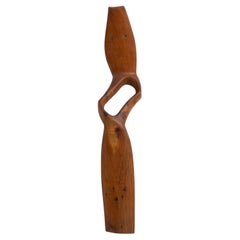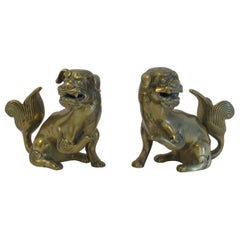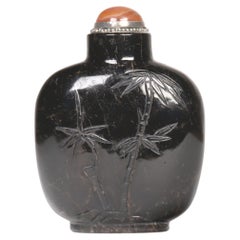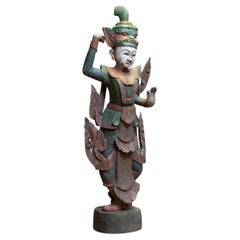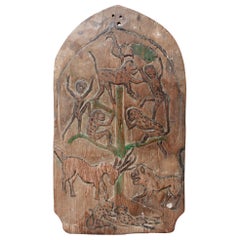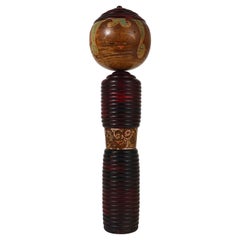Europe - Sculptures and Carvings
1980s French Mid-Century Modern Vintage Europe - Sculptures and Carvings
Wood
19th Century Chinese Qing Antique Europe - Sculptures and Carvings
Bronze, Metal, Brass
Early 19th Century Chinese Qing Antique Europe - Sculptures and Carvings
Agate
Mid-19th Century Folk Art Antique Europe - Sculptures and Carvings
Teak
Early 20th Century Indonesian Europe - Sculptures and Carvings
Wood
Early 20th Century Japanese Edo Europe - Sculptures and Carvings
Wood
Early 20th Century Japanese Edo Europe - Sculptures and Carvings
Wood
1970s Indonesian Tribal Vintage Europe - Sculptures and Carvings
Wood
Mid-19th Century Chinese Tang Antique Europe - Sculptures and Carvings
Wood
1960s French Mid-Century Modern Vintage Europe - Sculptures and Carvings
Shell
Early 20th Century Japanese Edo Europe - Sculptures and Carvings
Wood
Early 20th Century Japanese Edo Europe - Sculptures and Carvings
Wood
Mid-19th Century Japanese Edo Antique Europe - Sculptures and Carvings
Wood, Boxwood
Early 20th Century Chinese Europe - Sculptures and Carvings
Stone
21st Century and Contemporary Spanish Modern Europe - Sculptures and Carvings
Brass
21st Century and Contemporary Spanish Mid-Century Modern Europe - Sculptures and Carvings
Brass
Early 20th Century Burmese Folk Art Europe - Sculptures and Carvings
Teak
18th Century Burmese Antique Europe - Sculptures and Carvings
Stone
1990s Japanese Showa Europe - Sculptures and Carvings
Wood
21st Century and Contemporary Spanish Art Nouveau Europe - Sculptures and Carvings
Brass
15th Century and Earlier Chinese Han Antique Europe - Sculptures and Carvings
Terracotta
21st Century and Contemporary Spanish Modern Europe - Sculptures and Carvings
Brass
21st Century and Contemporary Italian Modern Europe - Sculptures and Carvings
Ceramic
Early 19th Century Victorian Antique Europe - Sculptures and Carvings
Hardwood
19th Century Thai Antique Europe - Sculptures and Carvings
Bronze
21st Century and Contemporary Italian Modern Europe - Sculptures and Carvings
Ceramic
17th Century Chinese Ming Antique Europe - Sculptures and Carvings
Stone
19th Century Indian Antique Europe - Sculptures and Carvings
Marble
Mid-20th Century Burmese Europe - Sculptures and Carvings
Bronze
19th Century Antique Europe - Sculptures and Carvings
Wood
Mid-20th Century Japanese Showa Europe - Sculptures and Carvings
Wood
18th Century Burmese Antique Europe - Sculptures and Carvings
Wood
Late 20th Century Japanese Showa Europe - Sculptures and Carvings
Wood
Early 19th Century Japanese Antique Europe - Sculptures and Carvings
Boxwood
Early 20th Century Japanese Edo Europe - Sculptures and Carvings
Wood
Mid-20th Century Japanese Showa Europe - Sculptures and Carvings
Bronze
21st Century and Contemporary Spanish Art Nouveau Europe - Sculptures and Carvings
Brass
1940s Chinese Qing Vintage Europe - Sculptures and Carvings
Stone, Wrought Iron
Late 19th Century Japanese Meiji Antique Europe - Sculptures and Carvings
Bronze
19th Century Burmese Antique Europe - Sculptures and Carvings
Wood
20th Century Asian Europe - Sculptures and Carvings
Jade
Early 20th Century Chinese Chinese Export Europe - Sculptures and Carvings
Cork
Mid-20th Century Chinese Chinese Export Europe - Sculptures and Carvings
Wood
19th Century Chinese Antique Europe - Sculptures and Carvings
Amethyst
1980s Victorian Vintage Europe - Sculptures and Carvings
Stone
21st Century and Contemporary Spanish Modern Europe - Sculptures and Carvings
Brass
Early 20th Century Burmese Europe - Sculptures and Carvings
Wood
Late 19th Century Japanese Antique Europe - Sculptures and Carvings
Bronze
1930s Chinese Chinese Export Vintage Europe - Sculptures and Carvings
Soapstone
19th Century Burmese Antique Europe - Sculptures and Carvings
Lacquer
19th Century Thai Antique Europe - Sculptures and Carvings
Bronze
Late 19th Century Burmese Antique Europe - Sculptures and Carvings
Wood
19th Century Burmese Antique Europe - Sculptures and Carvings
Marble
Late 19th Century Japanese Antique Europe - Sculptures and Carvings
Bronze
19th Century African Antique Europe - Sculptures and Carvings
Wood
Late 19th Century Chinese Chinoiserie Antique Europe - Sculptures and Carvings
Wood
Early 1900s Chinese Chinoiserie Antique Europe - Sculptures and Carvings
Jade
21st Century and Contemporary Indonesian Europe - Sculptures and Carvings
Lava
15th Century and Earlier Thai Antique Europe - Sculptures and Carvings
Bronze
Late 19th Century Antique Europe - Sculptures and Carvings
Wood
Read More
12 Calming Spaces Inspired by Japanese Design
From cherry-blossom-adorned walls paired with glamorous lighting to wood-paneled ceilings above checkerboard-patterned chairs, these 12 spaces seamlessly blend Eastern and Western aesthetics.
Rodrigo Rivero Lake’s Mexico City Showroom Is a Museum-Worthy Trove of Spanish Colonial and Asian Antiques
The dealer and curator has spent the past 50 years amassing a collection of exceptional art, furniture and architectural elements that trace the cultural influence of the Spanish empire from Europe to the Americas and beyond.
